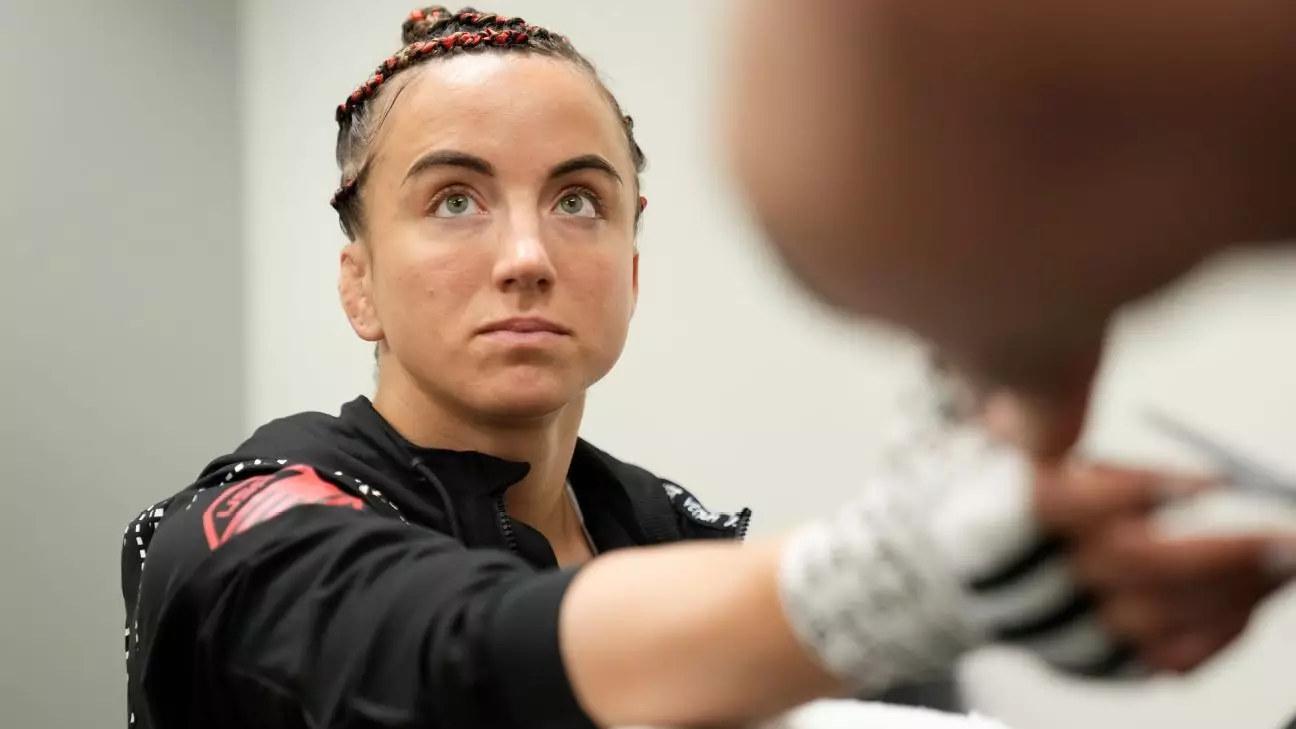Maycee Barber’s highly anticipated bout against Erin Blanchfield, scheduled for UFC Fight Night at the Apex in Las Vegas, took an unthinkable turn when a medical emergency forced Barber to withdraw just moments before she was set to walk to the Octagon. As the No. 4-ranked flyweight, the 27-year-old fighter had invested immense energy and preparation for this matchup—a milestone that would have marked her return to competitive action following a lengthy hiatus. However, instead of stepping into the cage, Barber suddenly found herself grappling with an unforeseen health issue that not only halted her ambitions for the night but also raised serious concerns about her long-term wellbeing.
Barber’s predicament was a stark reminder of the vulnerabilities that athletes face, often hidden beneath the surface of their grit and determination. While many had expected a fierce fight, what unfolded in the locker room was anything but anticipated. Barber reported a grave incident during her warmups that led the medical staff and commissioners to intervene, reflecting the precarious nature of high-level competition.
Health Crisis in the Spotlight
In speaking to ESPN following the ordeal, Barber mentioned the confusion surrounding the symptoms she experienced—initial reports indicated a seizure, but further investigation suggested it might have been a “pseudo-seizure” related to her autonomic nervous system. This medical ambiguity serves as a profound point for reflection within the sports community. How are the health and safety of fighters monitored and prioritized?
The fervor of mixed martial arts often puts immense pressure on athletes to perform despite underlying health issues. Barber’s experience highlights the urgent need for rigorous medical oversight and safeguards in such high-stakes environments. It’s crucial that fighters are not merely athletes pushed to their limits but individuals whose health must be placed paramount, above the whims of championship dreams or fan expectations.
The Reality of Cutting Weight and Performance Pressures
Leading up to the bout, Barber had faced the perennial challenge of weight management. Though she made a standard weight cut—with only a slight slip of half a pound—her body’s response on fight day spiraled into a medical crisis. This raises troubling questions regarding the efficacy and health impacts of current weight-cutting practices entrenched in the sport. As competitors commit to shedding potentially dangerous amounts of weight, the risks associated with dehydration and metabolic instability become more pronounced, and Barber’s incident serves as a cautionary tale emphasizing that health should never be compromised for sport.
A revealing factor in this situation is the emotional turmoil that accompanies an athlete’s sudden withdrawal. The hours spent in anticipation for both Barber and her opponent, Blanchfield, culminated in disappointment for all involved. In an industry where invulnerability is often romanticized, Barber’s openness about her struggles offers an essential glimpse into the human side of athletes, forcing fans to empathize rather than critique.
Gratitude Amidst Frustration
As she navigates this challenging chapter, Barber’s response to the situation shines with resilience. She expressed profound frustration at the trajectory of her career, especially after being sidelined for months. Nevertheless, her remarks reflect a deep-seated gratitude for life itself, reminding us of the fundamental principle that well-being far outweighs accolades in the fight world. Her stance is a constructive glance into a fighter’s psyche—a blend of ambition and vulnerability.
“I see people commenting, ‘Oh, I’m glad it happened to her and not to someone who is relevant,’ and I feel that’s pretty heartless,” Barber articulated, revealing an understanding of shared humanity. This acknowledgment of empathy resonates beyond the Octagon, urging both fans and fellow athletes to challenge the culture surrounding competitiveness that can too often overlook the individual’s plight.
In the weeks and months ahead, as Barber seeks expert medical advice, her journey reiterates an essential truth: struggles, whether visible or invisible, shape us all. In an age where the spotlight shines glaringly bright, it becomes increasingly vital to recognize and support the athletes striving for greatness—without disregarding their inherent human fragility.

